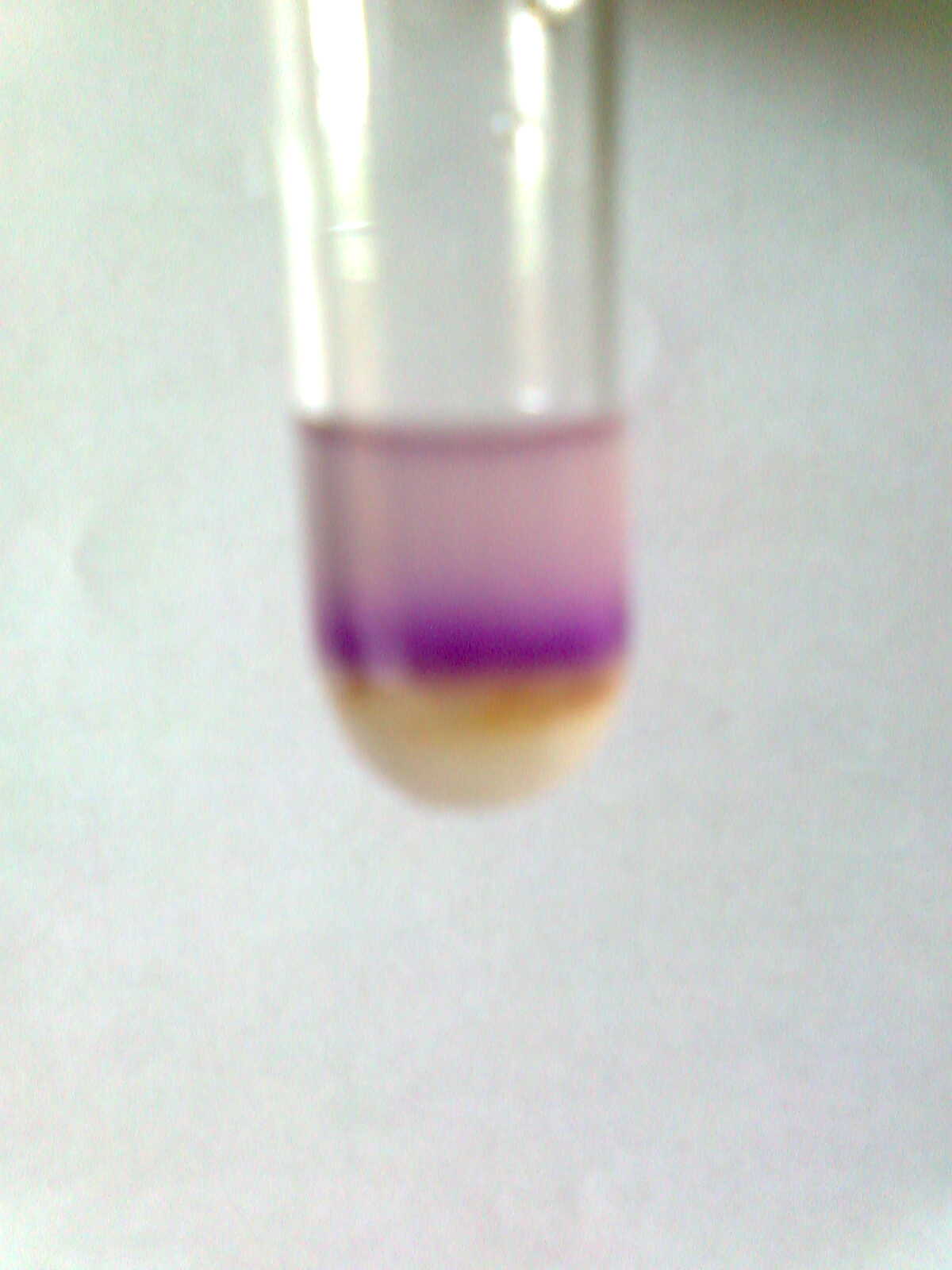
Uji Hopkins Cole
Hopkin's cole test This test is a confirmatory test the presence of amino acid tryp- tophan (indoyl group) [11]. Principle The test is based on the principle that the layering of concen- trated sulfuric acid over a mixture of tryptophan contains proteins DOI: 10.31080/ASMI.2022.05.1072
[Solved] Part C. ili Lead Acetate Test Part C. v HopkinsCole Protein... Course Hero
Hopkins Cole Test also referred to as glyoxylic Acid Reaction is among the qualitative testing methods for determining the differences between different types of amino acids and proteins. E lele i ka maʻiʻo

Hopkins Cole Test / Asked oct 21, 2019 in biology by kumarisurbhi (97.0k points).
Hopkin's Cole test is a specific test used for the detection of indole ring and thus, tryptophan in proteins. The test is also termed as 'glyoxylic acid test' as the reagent contains glyoxylic acid. The test was discovered by Frederick Gowland Hopkins and Sydney W. Cole in 1901 as a part of their work on the discovery of tryptophan.

PPT PROTEINS (Isolation, Hydrolysis, Qualitative Tests and Quantitative Determination
Principle: The indole group of tryptophan reacts with glyoxylic acid in the presence of conc. H2SO4 to give a purple colored complex. Glyoxylic acid is prepared by reducing Oxalic acid with magnesium powder or sodium amalgam. Glacial acetic acid which has been exposed to the sunlight also contains glyoxylic acid and can thus be used for this test.

Adamkiewicz reaction (Hopkin'scole test) Objective, Principle, Reagents, Procedure and Result
This paper provides a simple, reliable, and inexpensive spectrophotometric method for determination of glyoxylic acid in such reaction mixtures directly without the need of separation.
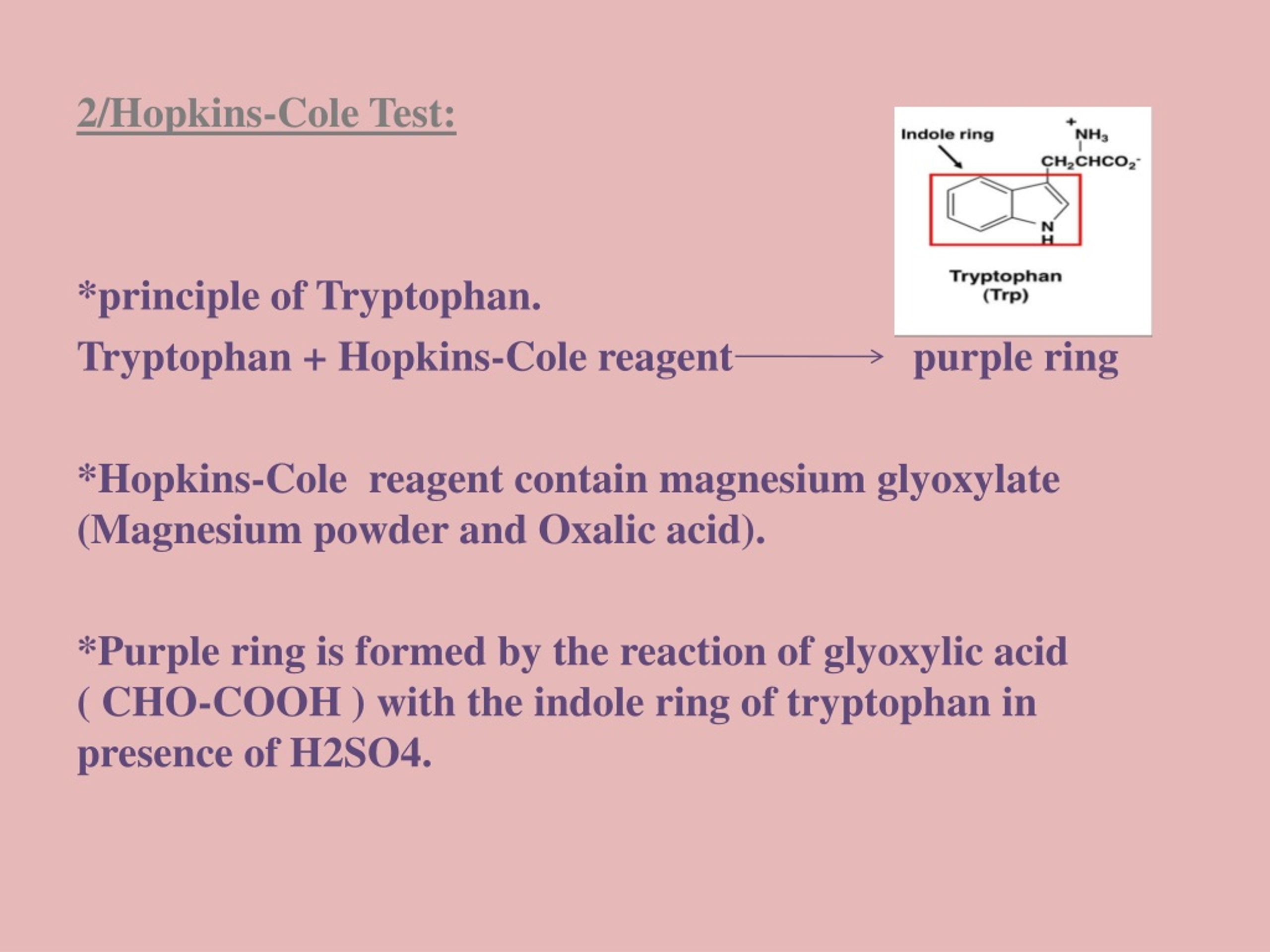
PPT Lab 2 Color Tests for Proteins and Amino Acids PowerPoint Presentation ID8809973
Hopkin's Cole test Experiments were carried out to identify the presence of the amino acid tryptophan in proteins. The principle used in this experiment is the process of adding a reagent to a sample to produce a positive test. While the method used is the addition of reagents. The sample used is egg white.
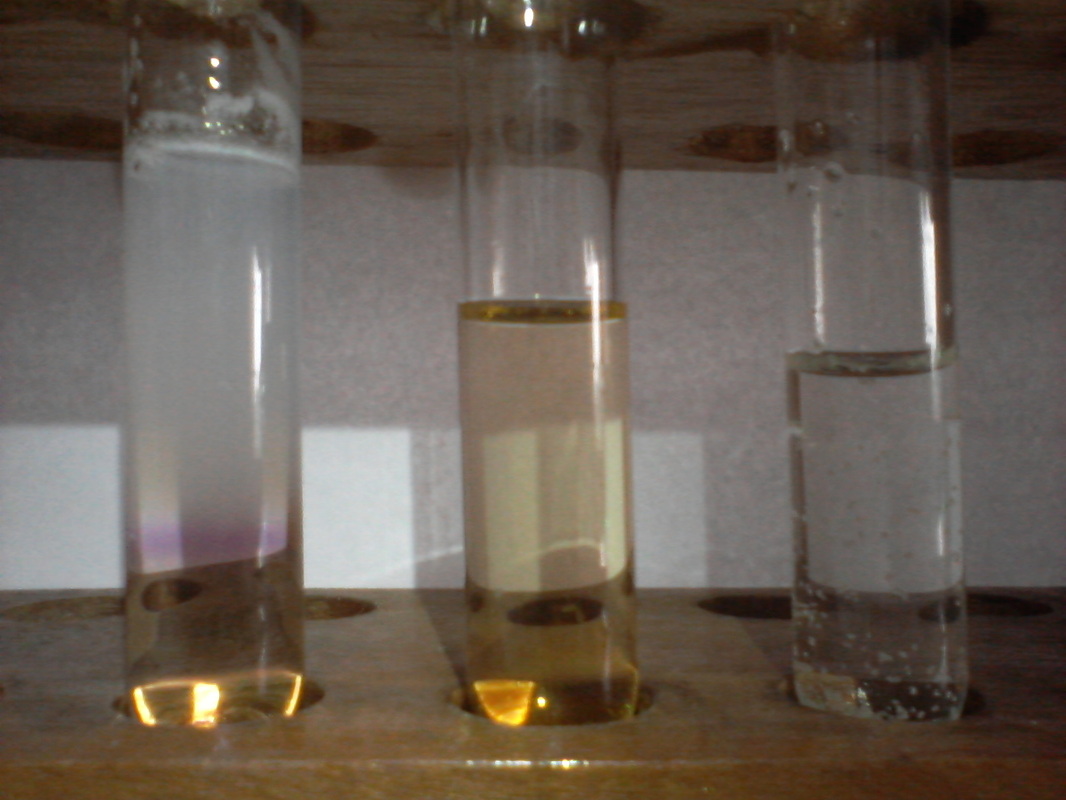
Activity No. 5 Color Tests for Proteins and Specific Amino Acids Panda Scribblets
Hopkins-Cole Test: Mix 1 ml of the amino acid solution with 1 ml acetic acid - glyoxilic acid reagent, in a test tube, vortex. Then carefully, add conc. Sulphuric acid along the side of the test tube, keeping the tube in an inclined position (do not shake the test tube , while adding acid)

PPT PROTEINS (Isolation, Hydrolysis, Qualitative Tests and Quantitative Determination
A Note on the Hopkins-Cole Reaction for Protein - PMC. Journal List. Biochem J. v.9 (1); 1915 Mar. PMC1258558. As a library, NLM provides access to scientific literature. Inclusion in an NLM database does not imply endorsement of, or agreement with, the contents by NLM or the National Institutes of Health.
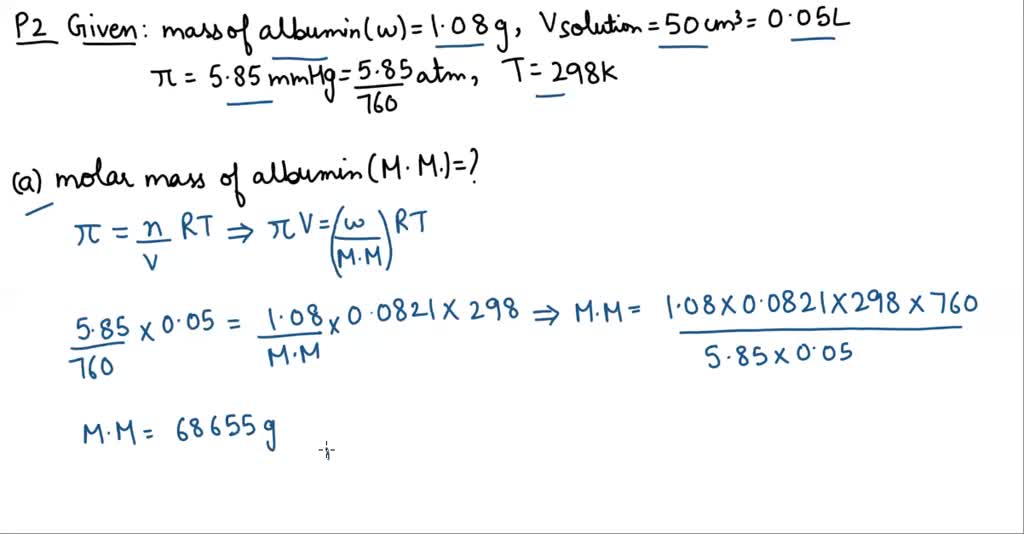
SOLVEDHopkinsCole Test (lot ' (typtoplan) F aDy protei dhat contains Wxpopbamd) Positive or
Hopkins Cole test - Its Principle, Reagents, Procedure etc. January 2, 2020 by Dr. Medicalstudyzone.com 6 Comments. Tryptophan is an amino acid. Hopkins Cole test is a specific test used for the detection of tryptophan. When tryptophan is present in a solution, it gives a reddish violet ring. Table of Contents.

HOPKINS COLE TEST YouTube
The Hopkins-Cole reaction, also known as the glyoxylic acid reaction, is a chemical test used for detecting the presence of tryptophan in proteins. [1] A protein solution is mixed with Hopkins Cole reagent, which consists of glyoxylic acid. Concentrated sulfuric acid is slowly added to form two layers.

Healthy Cole Marschall plays big roles in helping Hopkins return to the playoffs
An amino acid is a molecule that contains an amino group and a carboxyl group in the same molecule. Amino acids found in proteins are α-amino acids. This means the amino group (NH 2 - or NH 3+ -) is attached to the alpha carbon--this is the carbon next to the carboxyl group. There are 20 amino acids that differ from each other only in the.

Molisch's Test for Carbohydrates 2.0 YouTube
Some of the qualitative methods that are used to detect different types of proteins and amino acids are Ninhydrin test, Xanthoproteic test, Millon's test, Sulfur test, Hopkins-Cole test,.
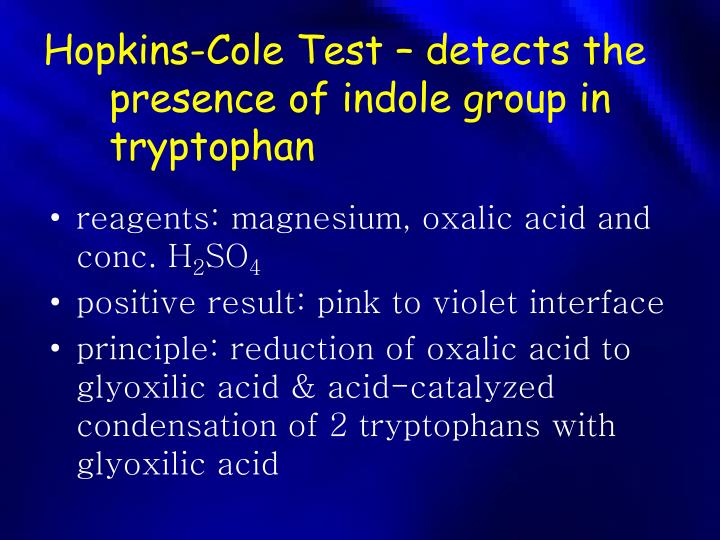
PPT PROTEINS (Isolation, Hydrolysis, Qualitative Tests and Quantitative Determination
The Hopkins-Cole reaction or glyoxylic acid reaction, is a chemical test used for qualitative detecting of tryptophan in protein solutions. tryptophan + glyoxylic acid + sulfuric acid > violet product. I know the chemical formulas of reactants, but I could not find the product formula and a mechanism for the reaction.

Activity No. 5 Color Tests for Proteins and Specific Amino Acids Panda Scribblets
Hopkins Cole Test also referred to as glyoxylic acid reaction is one of the qualitative test methods to determine differences in types of proteins and amino acids. This test is used to identify the presence of the amino acid tryptophan in proteins; tryptophan is the only amino acid that has an indole ring group.
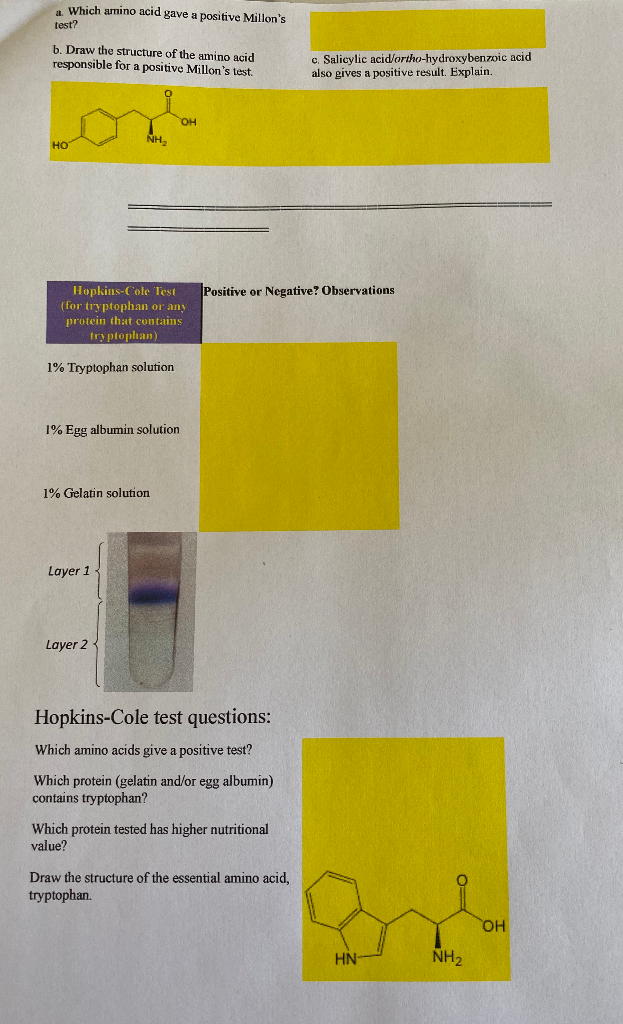
Hopkins Cole Test / Asked oct 21, 2019 in biology by kumarisurbhi (97.0k points).
It is Specific for Tryptophan amino acid whether it is free or in proteins. Sulphuric acid in presence of mercuric sulphate oxidizes the indole nucleus of tr.

HopkinCole test Part 2 (Identification of Amino Acids Tryptophan) YouTube
Hopkins Cole Test also referred to as glyoxylic Acid Reaction is among the qualitative testing methods for determining the differences between different types of amino acids and proteins. The test is used to determine the presence of tryptophan, an amino acid, in proteins.